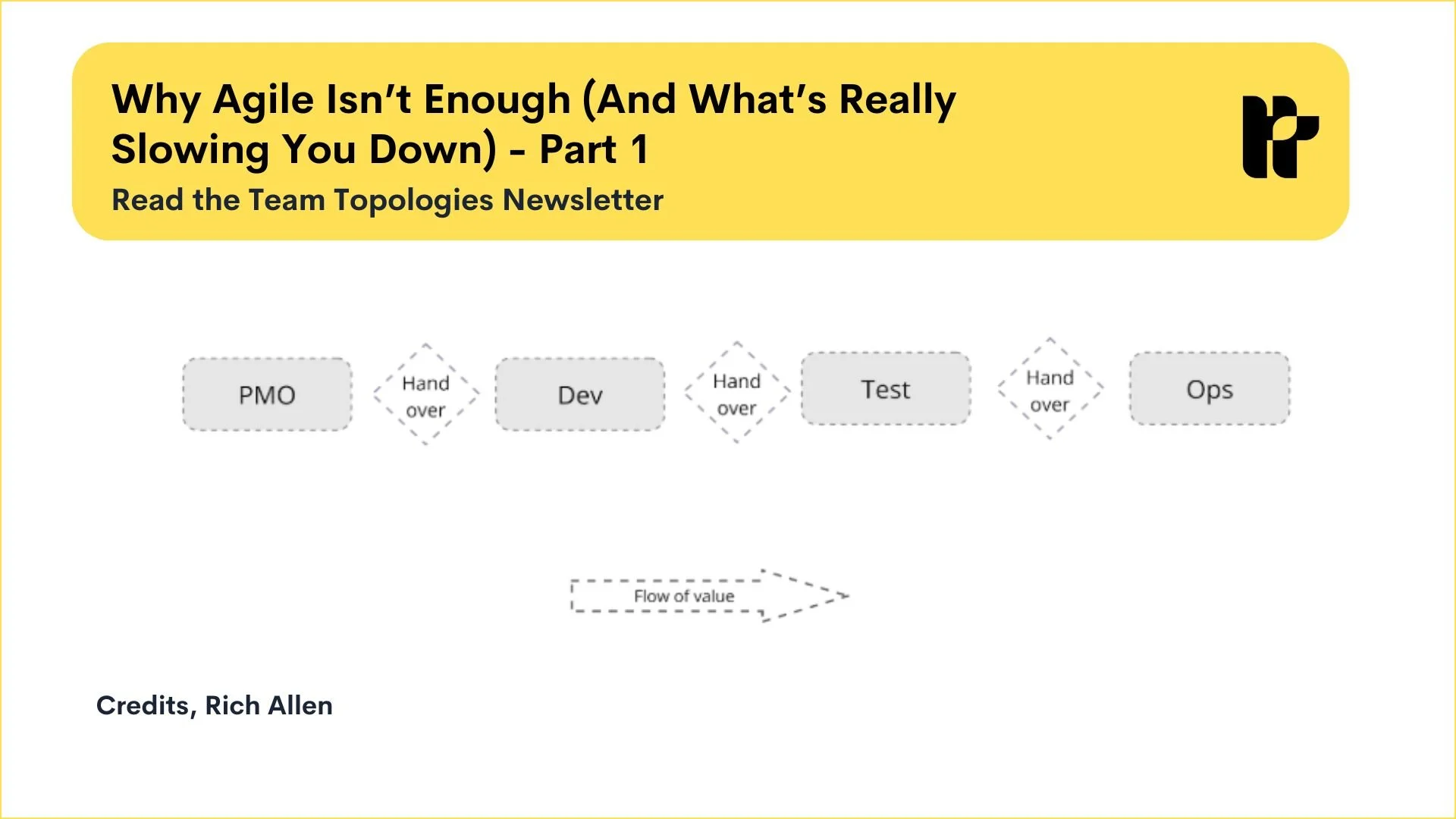Newsletter ( OCTOBER 2025): Moving Beyond Agile Rituals – Designing the Whole Organization for Fast Flow
For organizations facing critical structural bottlenecks or striving for radical business agility, the solution requires fundamentally reshaping how teams are organized around value delivery, managing both the complexity and the cognitive load placed on people. The core question must shift from, "Are we doing Agile right?" to, "Are we organized in a way that supports flow?".
Newsletter ( SEPTEMBER 2025): The second edition of Team Topologies is now available
The second edition of Team Topologies is now available. Six years after the original publication sparked a fundamental shift in how organizations approach structure and purpose, this updated edition provides the evolved framework leaders need to navigate today's complex landscape.
Newsletter ( august 2025): Why Agile Isn’t Enough (And What’s Really Slowing You Down) - Part 3
Agile gave us better delivery practices, but many teams still struggle with invisible friction. The real bottleneck isn't your ceremonies-it's whether your org structure actually supports fast flow.
Rich Allen's final piece in the 'Why Agile Isn't Enough' series explores how outdated team boundaries and coordination overhead quietly slow delivery, and why treating structure as a design lever (not a fixed artifact) can unlock the flow your teams are capable of.
Newsletter ( august 2025): Why Agile Isn’t Enough (And What’s Really Slowing You Down) - Part 2
In this 2nd part of the newsletter series ‘Why Agile isn’t enough (and what’s really slowing you down), Rich Allen explores two less visible frictions, overloaded platform teams and overly collaborative operating models, that quietly slow delivery. Instead of more process, we may need better questions about how our teams are structured, how they interact, and whether we’ve designed the organisation for clarity, autonomy, and flow.
Newsletter ( JULY 2025): Why Agile Isn’t Enough (And What’s Really Slowing You Down) - Part 1
Many teams adopt Agile in the hope of moving faster. They introduce sprints and stand-ups, visualise the work, and improve discipline at the team level. The process brings rhythm, visibility, and a sense of progress, and yet, delivery is still slow. Work gets done, but the value takes too long to reach users. Dependencies multiply, coordination becomes a constant effort, and every step forward seems to rely on waiting for someone else. "We're doing Agile", but are we really being agile?
For many organisations, introducing Agile helps make the work more visible. Teams are more aligned in how they plan, estimate, and reflect. But visibility doesn’t equal flow, and progress on the board doesn’t always mean progress in the system. You can have well-run teams, but still struggle to deliver value end-to-end. At some point, you have to ask where the work is getting stuck, and why, what slows things down between teams, not just within them, and how are team structures within the organisation shaping the way value flows.
Newsletter (MAY 2025): When Teams Grow Too Large: Solving Cognitive Load Issues
Is your team suffering from size-related cognitive overload? Team Topologies offers practical solutions.
Newsletter (MAY 2025): Leadership as an Enabling Team
In today's rapidly evolving business landscape, organizations face constant pressure to adapt and transform. Traditional hierarchical structures often prove inadequate in fostering agility and driving meaningful change. To address this challenge, leaders are increasingly exploring innovative approaches to team organization and collaboration. One such approach is leveraging the principles of Team Topologies, specifically the enabling team type and Facilitation mode.
Leadership teams do not see themselves as enabling team types. They often see the potential of enabling teams, but the default approach is to delegate the tasks to other teams, either by assembling new temporary enabling teams or asking a current team to behave as an enabling team to help other teams.
We have seen various types of enabling teams depending on the missing capability identified. Like agile coaches, SREs, testing specialists, you name it. Yet, we consider that leadership teams are in a unique position to behave as enabling teams to drive meaningful change in key strategic areas.







